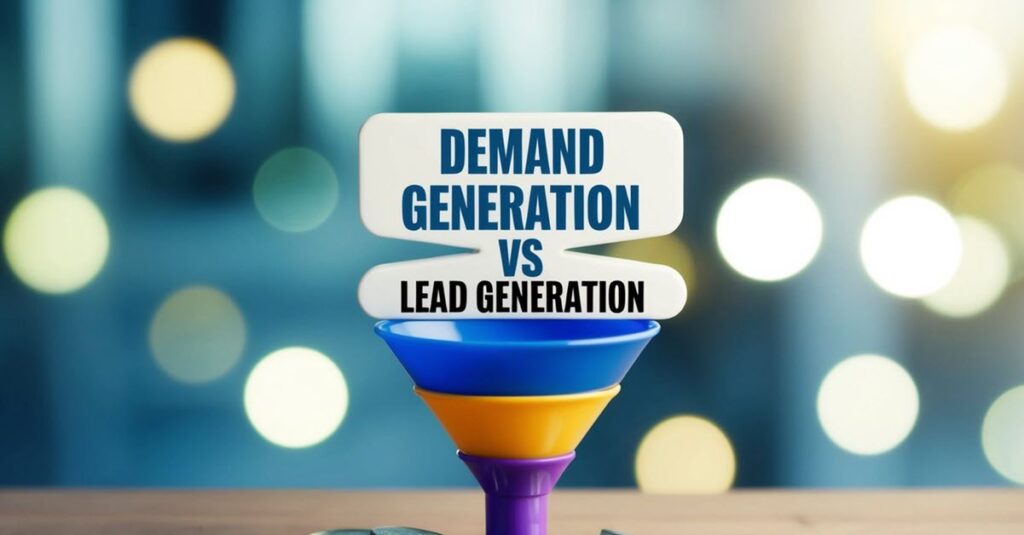Lead Generation
Defining Lead Generation
Lead generation is the process of identifying and cultivating potential customers for your business’s offerings. The aim is to guide these prospects through the marketing funnel until they become paying customers.
Our company, FlexLeads is a lead generation company providing lead generation services for local business customers in North America. Many of the tactics that we use as part of our lead generation strategy are presented within this article. As a small business owner, you can implement many of these strategies yourself. Alternatively, you can focus on your core competencies and outsource generating leads to a lead generation agency.
Importance for Small Businesses
For small businesses, lead generation is vital. It allows you to reach more customers and grow your business sustainably. Effective lead generation strategies can mean the difference between a thriving company and one that struggles to make sales.
Lead Generation Fundamentals
Your journey in lead gen begins with understanding the core methods:
- Content Marketing: Create valuable content that answers your potential customers’ questions.
- Social Media: Use platforms suited to your market to engage with users and promote your content.
- Email Campaigns: Send targeted emails to educate and nurture your potential lead pool.
- Networking Events: Face-to-face interactions can help build trust and gather leads.
- SEO: Optimize your website to rank higher in search engine results, making it easier for customers to find you.
Inbound vs. Outbound Marketing
Before we get started, we’ll discuss the difference between inbound and outbound marketing. Inbound marketing involves attracting a sales lead into your marketing ecosystem by providing value (like an extremely helpful blog post). Outbound leads involve proactively reaching out to potential customers with techniques like advertising and cold calling. Both are discussed here – and both can be effective lead generation techniques.
1) Generating Inbound Leads With Your Website
Content Marketing Strategies
In order to attract the attention of a potential client, you have to develop quality content that your prospect wants to consume in order to help their business. Your content must not only correctly identify the needs and issues that your website visitor faces, you must also demonstrate that your company is able to solve their problems.
Types of Content
There are many different lead gen tactics you can use as part of your overall marketing strategy to attract prospects including:
- How-to guides
- Infographics
- Case studies detailing your success stories
- Educational videos
All content should serve to inform, engage, and convert your audience into leads.
Content Schedule
You should aim to publish content on a regular schedule on your website. If you have a blog – and you should – it is a great opportunity to publish weekly or bi-weekly content that provides great informational value to your audience. Not only is this information more helpful to your users, content that is strictly sales oriented is generally less likely to rank in search engines than what is considered to be helpful content.
Effective Landing Pages
Most of the content on your website should be informational content. However, when you are running a highly targeted small business lead generation campaign, you’ll want to make use of landing pages. The goal of a landing page is for a new lead to your website to contact your company and become a “conversion”.
Your landing page must capture attention and guide visitors toward the conversion goal. Use a clean, visually appealing layout that highlights your company’s unique value proposition. Make it very clear that the goal of your landing page is for your prospect to reach out to you. You’ll want to analyze the performance of your landing pages and adjust to optimize their performance.
Call to Action Strategies
A “Call to Action” should be an obvious invitation for your prospective customer to reach out to you. Your call to action (CTA) must stand out from the rest of the page – while specific color doesn’t matter, the color and text should contrast from the rest of the page to draw their eye. Text used around the call to action should inspire action (“get,” “see,” or “start”)
Be very clear on what will happen when a prospect reaches out. Let them know exactly what will happen when they fill out a form or call you. As an example, don’t use the word “submit” on buttons, use more descriptive text like “Sign up for Free Trial”. Having multiple calls to action on a single page is recommended provided the CTAs are spaced appropriately.

A phone number that is always visible – no matter how much the user scrolls – is one way to keep your call-to-action always infront of the user, and increase your conversion rates
Special Offers and Trials
Having an enticing offer is essential for getting people to reach out to your organization. Below are some ideas you can implement in order to increase conversion rates.
Creating Exclusive Discounts
Offer your leads an exclusive discount they can’t ignore. This strategy demands action, as the deal feels personal and time sensitive. Use bold calls to action to guide potential customers through the buying process:
- Limited-Time Offer: Create urgency by adding a countdown.
- First-Time Buyer Discount: Encourage new customers to make that initial purchase.
Providing Free Trials (for Software Products)
Allow leads to experience your product with zero risk through free trials. This direct product experience builds trust and can lead to a product qualified lead, a user considering purchase after trial.
- Set Time Period: Typically 14 or 30 days.
- Feature Access: Choose whether to give full or partial product access during the trial.
Mention clear benefits the user will gain during the trial period:
- Full Access to Premium Features
- No Credit Card Required at Sign-Up
Search Engine Strategies
There are two ways to bring in prospects from search engines like Google, Bing, Yahoo, and YouTube (YouTube is the second most popular search engine in the US). SEO and paid search ads.
SEO
SEO is a huge topic, so we’re going to only briefly touch on it here. It involves someone searching for a product or service that you offer and having your website rank near the top of the search results. This results in free traffic to your website.
So, you’ll want to make sure that your website content and structure fully support SEO. The first step is to really understand your customers. Know who they are and what they search for online. You can then meet their needs and deliver them to your website by providing the answers to their queries related to your offerings.
You’ll perform keyword research to find those keywords that are relevant to your customers and develop content around those keywords. The better your content, the better the chances are that your ideal prospect will search for keywords related to the services that you offer – and that the page that you wrote ranks near the top of the search results. This results in free traffic to your website.
Paid Search Ads
Paid search ads, also known as pay per click (PPC) ads, are a form of online advertising where you bid on keywords related to your products or services. When users enter these keywords into search engines like Google, Yahoo or Bing, the ads appear at the top or bottom of the search results page. You pay a fee each time your ad is clicked, hence the term “pay per click.” A big advantage of paid search ads is that unlike SEO, paid search ads are a digital marketing technique that can drive traffic to your website almost immediately. This can help you to test your website, landing pages, and offers in order to determine what is most effective for converting prospects into customers.
Website Optimization
A high-performing website acts as your digital storefront. Ensure fast load times and mobile responsiveness (making sure your website looks good for desktop, tablet and mobile users). Make sure that your website is easy to navigate and is full of information that keeps your potential customer engaged.
Website Forms
Too often, many business owners want to get way too much information from prospects right off the bat. While it is ok to try to qualify prospects by encouraging who should sign up with the appropriate text near the title of the form, attempting to qualify prospects with dozens of fields will result in no conversions. Instead, keep forms short by only requesting essential information. Each extra field will reduce the likelihood of form completion.
Effective SEO Practices
Optimize your website for search engines to boost your visibility. Research keywords relevant to your business and integrate them into your website copy, titles, and meta descriptions. Prioritize creating a logical site structure that search engines can crawl efficiently.
2) Social Media
Social Media Marketing Basics
Social Media should be a key component of your lead generation process. But don’t make the mistake of trying to be active on every social media platform. Only focus on the social media platforms that offer your best chance for generating leads.
This means that you need to focus ONLY on those social media platforms where your target customers are active.
A couple of examples
For B2B companies, this may mean a platform like LinkedIn. If you’re focused on a B2C demographic that skews a bit older, a platform like Facebook may be a better bet.
LinkedIn Sales Navigator
LinkedIn Sales Navigator is a powerful tool designed to enhance lead generation for businesses. Pricing starts as low as $79.99/month (as of Summer 2024) and provides advanced search filters to identify potential leads based on specific criteria such as industry, company size, job title, and geographic location.
You can engage with and save leads and track their activities, facilitating personalized outreach and follow-up. Overall, it streamlines the process of finding and connecting with high quality leads, ultimately boosting sales efforts.
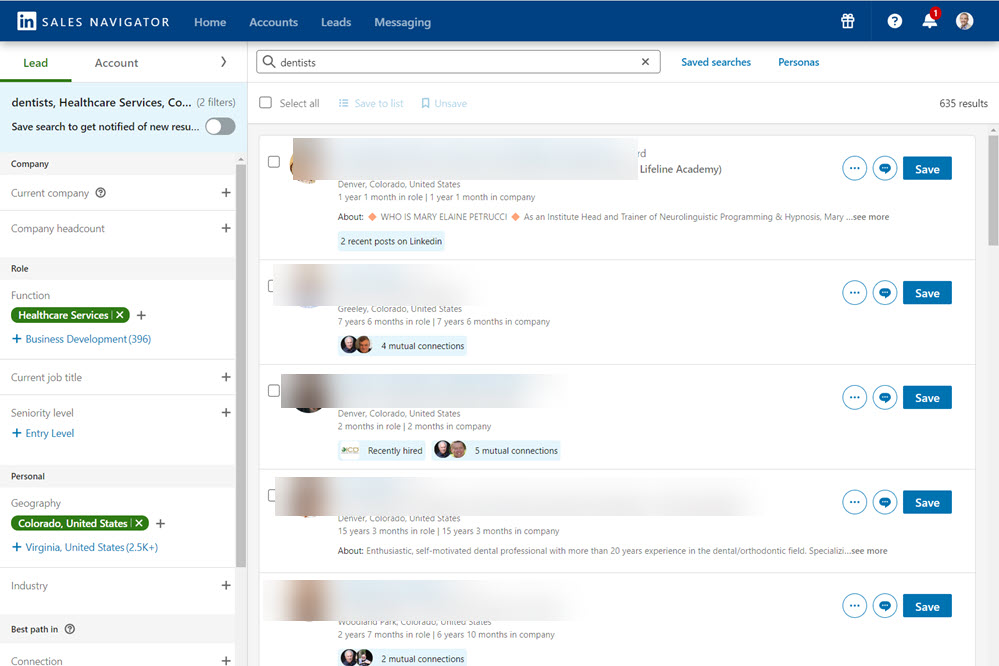
LinkedIn Sales Navigator Allows You to Search for Connections by Location, Role, and Company to find Good Connections for Lead Generation
LinkedIn Groups
LinkedIn also offers millions of groups on its platform. Groups serve as a gathering spot for professionals in similar industries. Identify relevant groups and contribute valuable insights to discussions.
B2B lead generation within LinkedIn groups shouldn’t be overtly salesy, instead, share industry news and your original content to position yourself as a thought leader. This activity can attract leads from professionals interested in your services. 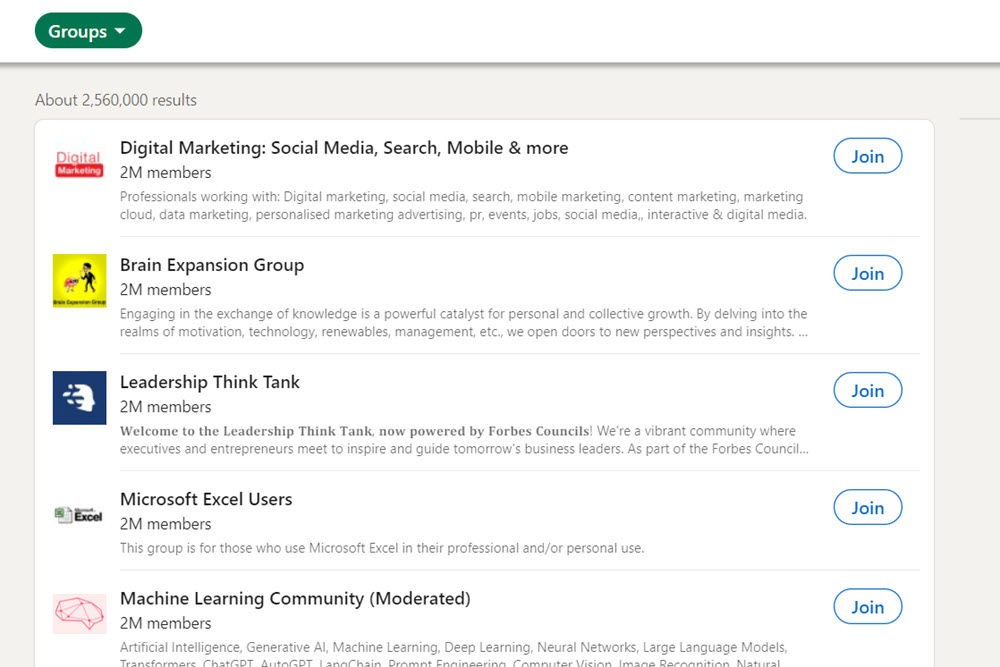
There are millions of LinkedIn Groups – being an active, helpful and respected member of a group can raise your profile and generate leads for your business
Social Media Scheduling and Content
In social media, interact with your followers regularly. So if you’re in a relevant LinkedIn Group, be sure to post content of value, ask questions, and join discussions. This gives you insights into your audience’s needs and interests. Use these platforms to share blog posts and updates, which drives traffic back to your website. But don’t be overly salesy. Your posts to social media should heavily favor informational value over transactional content by at least a 4:1 margin.
Social Media Ads
The key with advertising on social media is to only run ads where your ideal customers are. Ads are how social media companies generate the overwhelming majority of their revenue. If you’re trying to reach customers on social media, advertising is a great way to do it.
Major Social Media At Platforms
- LinkedIn (B2B)
- Facebook (B2C)
- Instagram (B2C)
- TikTok (B2C)
- Yelp (B2C)
3) Email Marketing Campaigns
Email marketing campaigns are arguably the most important lead gen tactic for small business owners. The huge advantage of email marketing is that you have your own list of engaged prospects that have expressed interest in your offerings by signing up for your email marketing newsletter.
You effectively “own” your list – this makes it an extremely effective digital marketing strategy. With an email marketing strategy, you aren’t subject to SEO algorithm changes or advertising price hikes by search engines or social media platforms.
Email List Building for Newsletters
First you need to build your list. There are a couple of different ways to get people to sign up for your newsletter – on your own website and through partnerships
On Your Website
Build your email list with an effective lead capture strategy. Present an offer to new website visitors in exchange for their contact information. Think free webinars, eBooks, or discount codes. Use sign-up forms on your website, at the point of sale, and during events.
Partnerships
You seek out partnerships or pay for advertising in other popular newsletters that are related to the service you are offering.
Creating Valuable Newsletters
- Informative and Friendly – Emails should have clear, concise messages to engage your audience. Send newsletters that provide readers with valuable content to engage and maintain their interest. You should offer exclusive insights or tips as well as actionable advice that your subscribers can implement in their own business.
- Powerful Subject Line That Increases Open Rate – Use subject lines that grab attention and content that delivers value. Remember to personalize when possible, as this fosters a connection with your recipients.
- Don’t Oversell – The “salesiness” of your newsletter should be kept in check. Provide a lot of valuable information for free – and only periodically present sales offers once you’ve established credibility and trust with your subscribers.
- Regularly Scheduled – Create a newsletter schedule and stick to it. Readers anticipate consistency and it positions you as a reliable source. Include both industry insights and news about your business to balance value with promotion. A random schedule with highly variable gaps can end up with your email in the spam folder.
- Follow all Regulations – Always obtain explicit consent to comply with privacy laws in areas where you do business.
Lead Management and Nurturing
Effective lead generation is only one piece of the puzzle. You must be able to effectively manage and nurture leads to turn qualified leads into loyal customers. This process requires robust CRM software, a well-defined sales pipeline, and strategic drip campaigns.
Note that tracking lead management activities is best done with lead CRM Software. There are many vendors that have these software packages specifically geared towards small businesses. This article isn’t specifically about CRM software, but know that there is a wide variety of prices ranges from free to very expensive.
If you’re just starting out or are on a tight budget, you can even use Google Sheets to keep track of everything. There are plenty of sample templates that are available for free. As your company grows, you can make use of a more robust system like Hubspot, Monday, Asana, Clickup, PipeDrive or one of the many other available software packages.
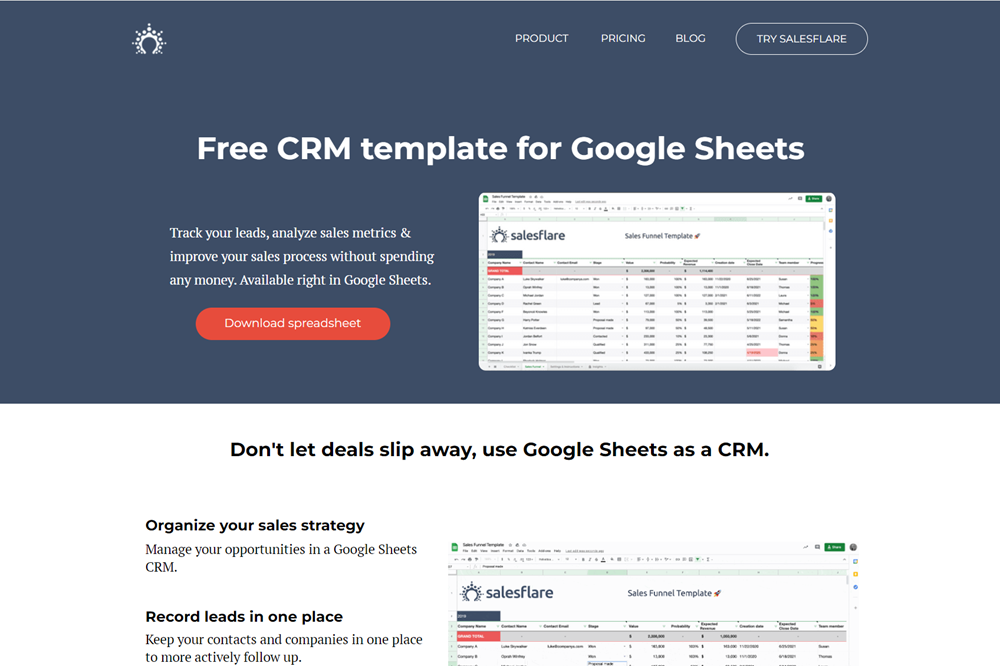
SalesFlare offers a Free CRM Template for Google Sheets
Features you should look for when doing lead management and nurturing are presented below.
CRM for Lead Tracking
You need CRM software to track and manage your leads efficiently. A good CRM system will allow you to:
- Sort and qualify your leads based on your own custom preset criteria
- Monitor lead interactions and behaviors
- Keep detailed records that enhance customer relationship management and personalization
Sales Pipeline Development
Develop a clear sales pipeline to guide your leads through the buying journey. This should include:
- Stages of lead qualification.
- Specific tasks aligned with each pipeline stage.
- Clear indicators for moving a lead to the next stage.
Drip Campaign Implementation
Implement drip campaigns to provide your leads with relevant information at the right time. In practice, this means:
- Creating a series of emails that educate and inform your leads.
- Triggering these emails based on specific actions or timelines.
- Using analytics to refine and adjust your messaging for the best results.
Note that some CRM packages have email capability. With others, you’ll have to use a third party email newsletter services like ConvertKit or beehiiv.
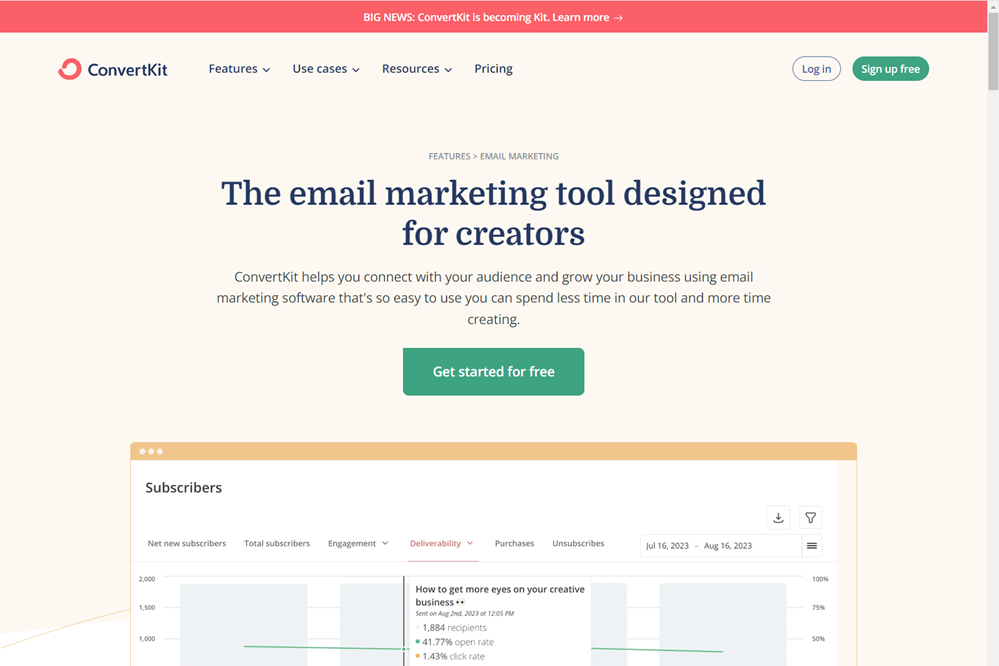
ConvertKit Email Marketing
Marketing Automation
No matter what software packages or website platforms you choose, marketing automation is essential to not only save you time, but to prevent mistakes that can come from hand entering data. You’ll want to automate repetitive tasks to increase efficiency.
Here are some sample automations:
- Email Campaigns: Send targeted messages automatically based on user actions that fire “triggers” in your CRM.
- Social Media: Schedule posts and analyze engagement to capture leads. Many software packages like hootsuite and Buffer have automatic social media posting capabilities
- Lead Nurturing: Provide timely responses and personalized content, moving leads down the funnel faster.
Many software packages come integrated with automation features that allow you to automatically transfer data between separate platforms (like your website, email marketing, and CRM software). The good news is that there are many third party services that provide APIs that allow these different platforms to communicate with each other. Zapier and IFTT provide the APIs to allow different software packages to talk to each other and share data.
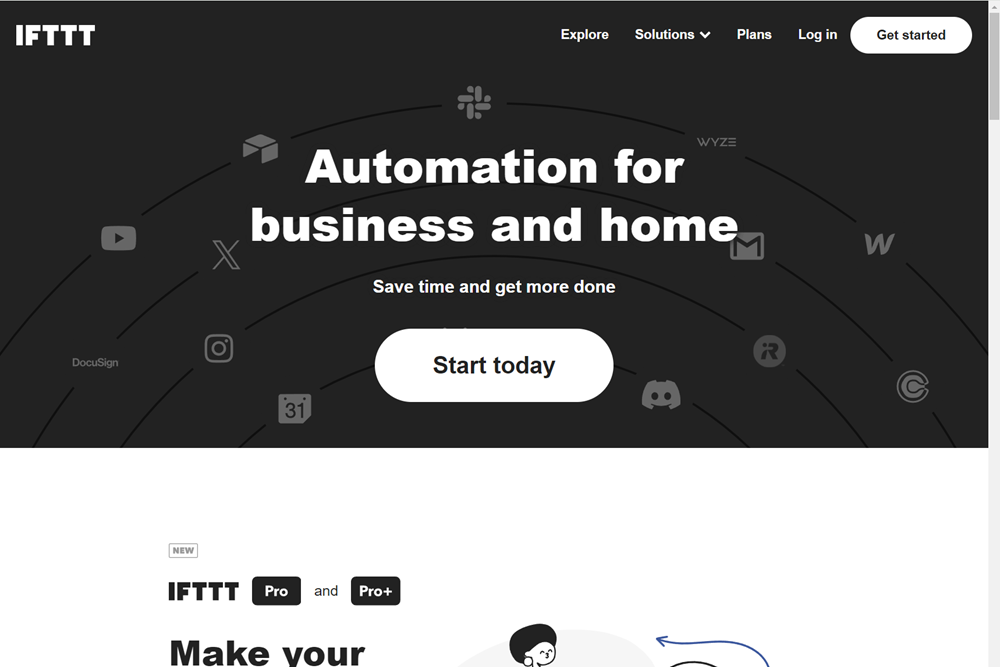
IFTT allows you to easily transfer data between different software applications
Analyzing and Measuring Success
In assessing your lead generation strategies, focus on tangible outcomes and data-driven insights.
Key Metrics and ROI
Return on Investment (ROI) and key performance indicators (KPIs) serve as your lead generation compass. Track these metrics to gauge success:
- Conversion Rate: The percentage of leads that become customers.
- Customer Acquisition Cost (CAC): Total spend on acquiring a new customer.
- Lead to Close Rate: Rate at which leads convert to sales.
- Customer Lifetime Value (CLV): Predicted revenue from a customer over their relationship with your business.
Lead Scoring
Not all leads are created equal – that’s where lead scoring comes in.
Lead scoring allows you to rank prospects based on their potential value. The primary purpose of lead scoring is to identify which leads are most likely to convert into customers, thereby optimizing your team’s resource allocation.
By assigning a numerical value to various attributes and behaviors exhibited by prospects, you can focus on high-quality leads, tailor engagement strategies, and ultimately improve conversion rates. This targeted approach not only streamlines the sales process but also aligns marketing and sales efforts, ensuring that both teams work towards common goals.
The process of lead scoring begins with you defining the Ideal Customer Profile (ICP) to identify key characteristics that signify a valuable lead to your company. Next, specific criteria are established, encompassing demographic and behavioral data. Point values are then assigned to each criterion based on its importance.
Many CRM packages allow you to track and score leads automatically. Leads that reach a predetermined score threshold are considered “sales-ready” and are passed to the sales team, while others are nurtured further through targeted marketing efforts.


